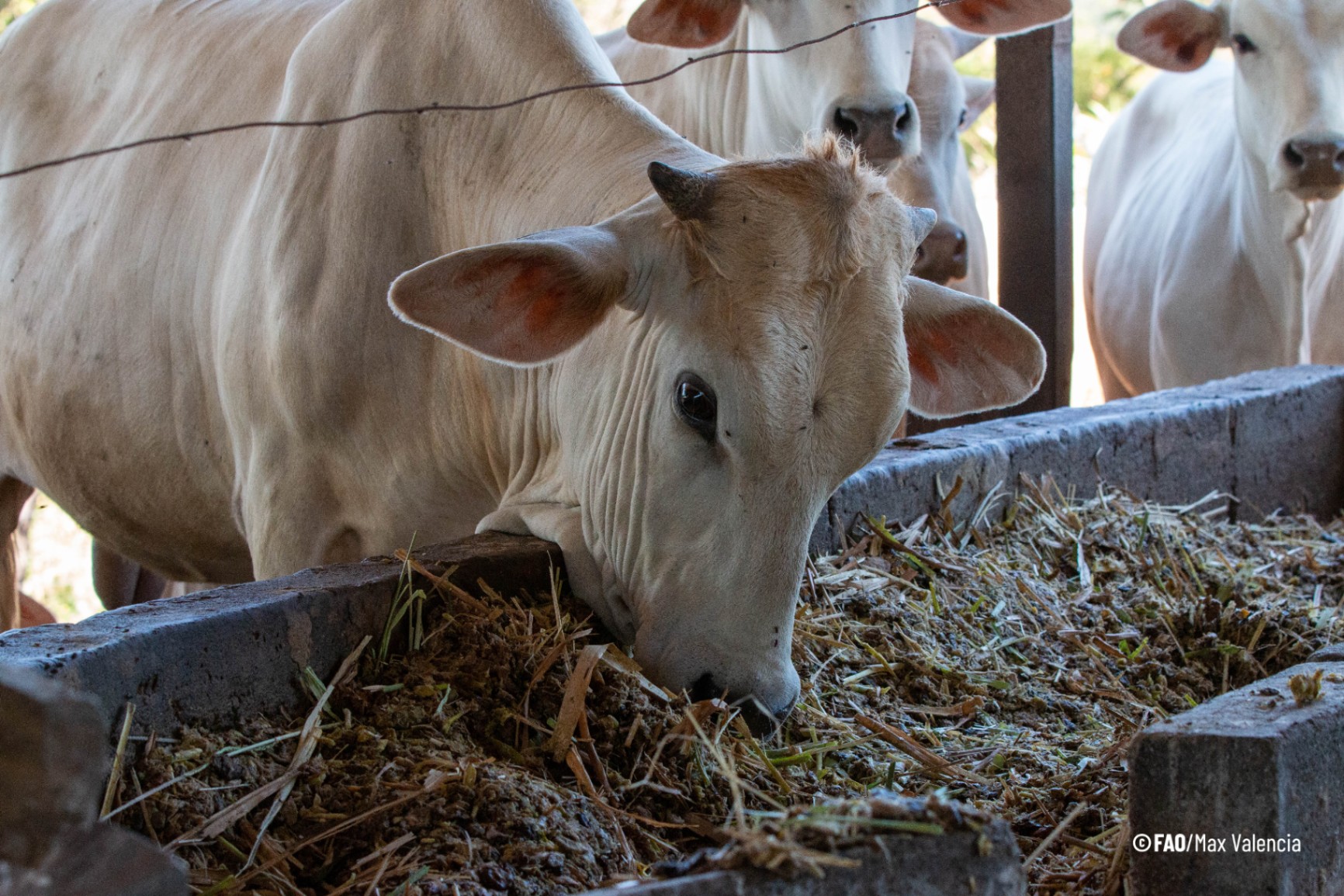FAO Regional Office for Latin America and the Caribbean
Featured publication
What challenges does livestock farming in Latin America and the Caribbean face in mitigating greenhouse gas emissions?
Costa Rica – More than 2 400 farms are applying sustainable livestock practices through the NAMA, positioning the country as a global leader in climate-responsible production. ©FAO/Max Valencia
Latin America and the Caribbean, despite being home to just 13.5 percent of the world’s population, is responsible for more than 23 percent of global beef and buffalo meat production and 21.4 percent of global poultry production. This key role in global food security, however, comes with a significant environmental impact. The livestock sector is one of the largest sources of greenhouse gas (GHG) emissions, surpassing even the transportation sector.
The challenge for the region is clear: How can it remain a global livestock powerhouse without compromising the environment or exacerbating climate change? The recent FAO report, Advances and Challenges in Livestock Farming in Latin America and the Caribbean, explores the obstacles and opportunities the region faces in its pursuit of more sustainable livestock production — one that actively contributes to GHG emission reductions.
Several countries in the region have already begun implementing Nationally Appropriate Mitigation Actions (NAMAs), a set of strategies aimed at reducing the livestock sector’s carbon footprint without jeopardizing food production. The FAO report highlights progress in countries such as Brazil, Colombia, Costa Rica, Dominican Republic, Honduras, Mexico, Peru, and Uruguay. However, significant challenges remain.

Costa Rica – With technical support from the Ministry of Agriculture and Livestock, the country is making progress in implementing the NAMA to reduce emissions and improve productivity. ©FAO/Max Valencia
Financing and reliable data: key to successful implementation
One of the primary challenges many countries face is financing. Although international funding is available, competition for limited resources and stringent access requirements remain significant barriers. Nonetheless, some countries have made progress by leveraging innovative mechanisms, such as green bonds and national climate funds, which have helped unlock new opportunities.
Another major challenge is the lack of reliable data on GHG emissions. Without accurate data, designing effective policies and assessing the impact of implemented strategies becomes difficult. Developing participatory monitoring systems and improving national emissions inventories are crucial steps to ensure evidence-based policymaking and a more precise evaluation of NAMA initiatives.

Livestock in Uruguay – The Livestock and Climate project promotes sustainable grazing-based livestock production in partnership with more than 60 families. ©FAO

Chile – Sustainable livestock is advancing through the use of practices that optimize production and reduce environmental impact. ©FAO/Max Valencia
Lessons from Costa Rica and Honduras
Costa Rica stands out as a positive example in implementing silvopastoral systems, which integrate trees into pastures. This approach not only captures carbon but also enhances biodiversity and soil quality. The country’s success has been driven by incentives for livestock producers, including subsidies and low-interest loans, as well as partial financing from national resources.
Honduras, despite facing similar obstacles such as data gaps and limited access to international financing, has made progress in improving livestock production efficiency through farmer training and the adoption of sustainable agricultural practices. The country’s multisectoral approach, involving the government, NGOs, and the private sector, has also been key to the success of its livestock-related NAMAs.
Recommendations for sustainable livestock farming
Latin America has a unique opportunity to lead the transition toward more sustainable livestock farming. The region has the potential to contribute both to global food security and the fight against climate change, positioning itself as a global leader in responsible meat production.
However, realizing this potential requires overcoming existing challenges, such as inadequate financing, weak integration between public policies, and the urgent need to strengthen local and institutional capacities. International collaboration, particularly through initiatives like livestock NAMAs, will be crucial in addressing climate change and promoting a more efficient and environmentally responsible livestock sector.

